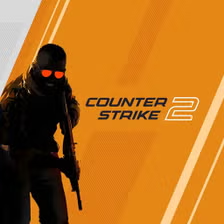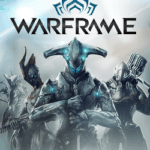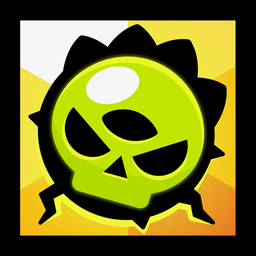Advertisement
Popular Now
Free Fire has grown from a lightweight battle royale experiment into one of the most dominant forces in mobile gaming. Developed by 111dots Studio and published by Garena, it has taken the world by storm, especially in regions where access to high-end smartphones and broadband is limited. This in-depth article will walk you through the journey of Free Fire — from its beginnings to its rise in esports, gameplay mechanics, monetization, and community culture — with detailed insights, pros and cons, and an expert verdict.
The game isn’t just another shooter. Instead, it has become a cultural phenomenon with millions of daily players, billions of dollars in revenue, and a strong presence in content creation, competitive gaming, and mobile app stores worldwide.
Therefore, the following sections break down Free Fire’s evolution, systems, community, and future in a structured and meaningful timeline.
Weapons and Loadouts: Crafting Your Arsenal
Free Fire’s weapon system features a variety of assault rifles, submachine guns, snipers, pistols, and melee weapons. The game balances realism with arcade-style mechanics, ensuring weapons feel satisfying without being too complex.
Popular weapons include the Scar and Groza for their consistent performance, the M1014 shotgun for close-quarters combat, and the AWM sniper rifle for long-distance eliminations.
Moreover, players can equip attachments like silencers, scopes, and extended magazines to enhance performance. Additionally, the game features throwable items like grenades and gloo walls, adding tactical depth to engagements.
Therefore, the right loadout depends heavily on the map, game mode, and team strategy. This system rewards players who understand weapon mechanics and positioning.

The Birth of Free Fire: Origins of a Mobile Titan
Free Fire was launched in December 2017, a time when the battle royale genre was just beginning to make waves in mainstream gaming. While Fortnite and PUBG were dominating the console and PC scenes, Free Fire took a unique approach by focusing solely on mobile users — especially those using budget Android phones. Moreover, Free Fire’s appeal came from its accessibility. It had minimal hardware requirements and could run smoothly even on smartphones with 1GB of RAM. As a result, it became an instant hit in markets such as Southeast Asia, India, Brazil, and other parts of Latin America. Unlike PUBG, which demanded powerful hardware and stable internet, Free Fire became the “people’s battle royale” — giving every gamer a chance to experience the thrill of last-man-standing combat without needing expensive gear.Gameplay Mechanics: Designed for Mobile Simplicity and Speed
Free Fire’s core gameplay revolves around fast-paced, 10-minute matches with up to 50 players on a shrinking map. Compared to other games like PUBG or Fortnite, this smaller player count leads to more intense and dynamic games. In each match, players begin by parachuting onto an island where they scavenge for weapons, armor, and healing items. Furthermore, the controls are designed to be intuitive for touchscreens, with features like auto-aim and optimized sensitivity settings to improve aim and movement on mobile. The quick match format, combined with mobile-friendly controls, makes it ideal for short gaming sessions, especially for users who prefer fast action without complex mechanics. Character System and Unique Abilities One of Free Fire’s defining features is its wide array of playable characters, each with their own special skills. Unlike most battle royale games where characters are purely cosmetic, Free Fire’s characters can significantly affect gameplay. Each character has an active or passive ability. For example, Alok can create an aura that heals teammates and boosts movement speed, while Chrono can generate a temporary energy shield to block incoming damage. Consequently, this adds an RPG-like element to the game. Players must choose characters that suit their style — whether they prefer aggressive rushes, supportive team roles, or stealth and survivability. In addition, this system encourages strategic play and experimentation. It also creates a collectible dynamic, as new characters are introduced regularly through events and seasonal updates.Weapons and Loadouts: Crafting Your Arsenal
Free Fire’s weapon system features a variety of assault rifles, submachine guns, snipers, pistols, and melee weapons. The game balances realism with arcade-style mechanics, ensuring weapons feel satisfying without being too complex.
Popular weapons include the Scar and Groza for their consistent performance, the M1014 shotgun for close-quarters combat, and the AWM sniper rifle for long-distance eliminations.
Moreover, players can equip attachments like silencers, scopes, and extended magazines to enhance performance. Additionally, the game features throwable items like grenades and gloo walls, adding tactical depth to engagements.
Therefore, the right loadout depends heavily on the map, game mode, and team strategy. This system rewards players who understand weapon mechanics and positioning.
Game Modes and Rotating Events
Beyond the classic battle royale format, Free Fire offers several additional modes to diversify the experience. These include Clash Squad, a fast-paced 4v4 mode that’s ideal for short sessions and skill development, and Lone Wolf, a 1v1 format for intense duels.Meanwhile, the game frequently hosts time-limited events with unique modes, missions, and rewards. For instance, past events have included zombie survival challenges, explosive headshot-only rounds, and crossover missions featuring franchises like Money Heist or Attack on Titan. These events not only provide variety but also reward regular players with exclusive skins, characters, and emotes. In turn, this helps maintain long-term player engagement. Graphics, Performance, and Device Compatibility Free Fire was built with performance in mind. Its graphics are more stylized than realistic, with a colorful and slightly cartoonish aesthetic. While it doesn’t rival high-end games in visuals, it offers consistent frame rates and stable performance on low-end devices. More importantly, the game runs well on Android and iOS devices with as little as 1GB RAM and 8GB storage. It’s also optimized to use minimal battery and data, making it highly accessible to players in bandwidth-constrained regions. In contrast, there’s a higher-fidelity version called Free Fire MAX, which offers enhanced graphics and effects for users with more powerful phones. Free Fire Esports: A Growing Competitive Scene Free Fire has established itself as a powerhouse in mobile esports. Tournaments like the Free Fire World Series (FFWS), Free Fire India Championship, and regional leagues attract millions of viewers and top-tier teams from around the globe. The 2021 FFWS, for example, had over 5.4 million peak concurrent viewers, breaking mobile esports records. Additionally, the game’s short match format, spectator-friendly interface, and thrilling action make it ideal for live broadcasts. As a result, pro teams like EVOS, Loud, and Team Elite have gained massive followings, and player earnings continue to rise, helping legitimize Free Fire as a competitive platform.

















